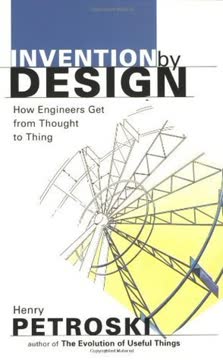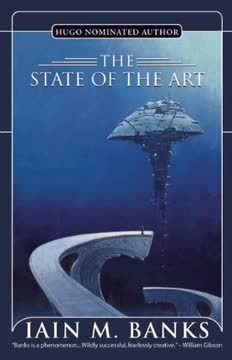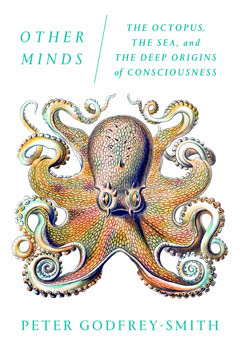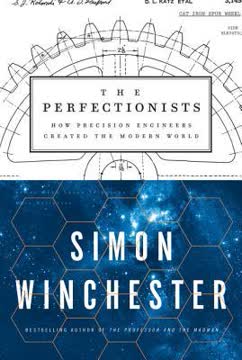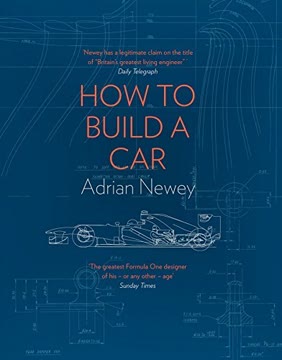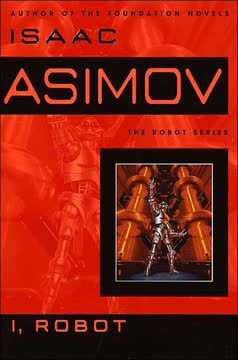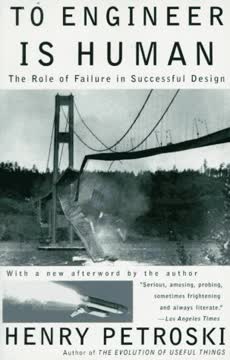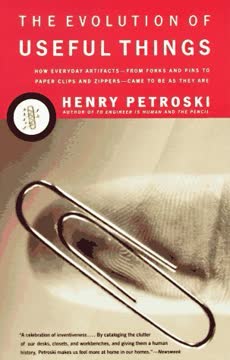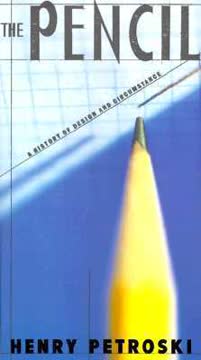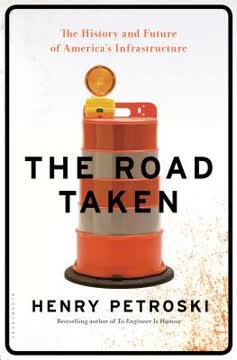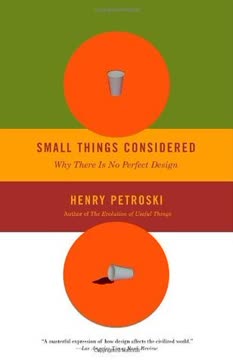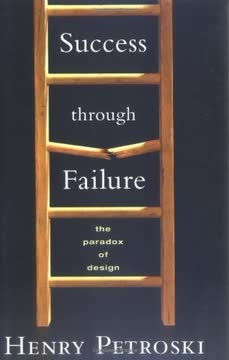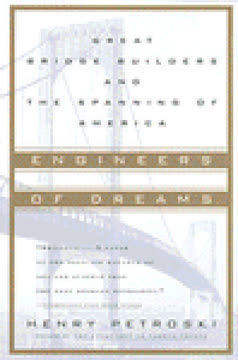Key Takeaways
1. Engineering is a fundamental human process shaped by the world around us.
Indeed, the world of our everyday experience is shaped by the practice of engineering and technology, and the world shapes those activities in turn.
Ubiquitous influence. Engineering is not just about high-tech computers or spectacular structures; it's woven into the fabric of our daily lives. From the air conditioning keeping us comfortable to the roads we travel on, engineering shapes our physical environment. This influence extends to our metaphorical world, encompassing telephones, videotapes, and computer networks.
Reciprocal relationship. The relationship between engineering and the world is not one-sided. While engineering shapes our environment, the world, with its needs, resources, and constraints, also shapes engineering. This interplay creates a dynamic system where innovation is driven by both technological possibilities and societal demands.
Origins and practice. Engineering is a fundamental human process with roots in the earliest days of civilization. While modern engineering has become professionalized and formalized, its core principles remain connected to the skills and discipline exhibited by craftspersons throughout history. Modern engineering is a more mathematical and scientific endeavor, but its practice still requires a good deal of commonsense reasoning about materials, structures, energy, and the like.
2. Engineering design involves balancing competing objectives and constant compromise.
Engineering is the art of compromise, and there is always room for improvement in the real world.
Conflicting goals. Engineering design is rarely about achieving a single, perfect solution. Instead, it involves navigating a complex web of conflicting objectives. For example, a paper clip should be easy to apply and have a strong grip, but these qualities often require trade-offs in design.
The art of compromise. Because of these conflicting objectives, engineering is fundamentally an art of compromise. The "best" designs are those that strike the most effective balance between competing demands, considering factors like cost, performance, aesthetics, and environmental impact.
Continuous improvement. No engineering problem is ever completely solved to everyone's satisfaction. There is always room for improvement, new materials to explore, and evolving societal needs to address. This constant drive for improvement is what fuels innovation and keeps the field of engineering dynamic.
3. Analyzing failures and limitations drives innovation and improved products.
A healthy sense of criticism is what gives the best inventors, designers, and engineers their edge, and it is also what drives the evolution of the made world and of technology.
Learning from mistakes. Engineering is not just about celebrating successes; it's also about scrutinizing failures. By carefully analyzing why things break, malfunction, or fall short of expectations, engineers gain valuable insights that inform future designs.
Identifying shortcomings. A key aspect of engineering is the ability to identify the shortcomings and failings of existing technology. This critical eye allows engineers to see opportunities for improvement and to develop new solutions that address those weaknesses.
Driving evolution. A healthy sense of criticism is what gives the best inventors, designers, and engineers their edge, and it is also what drives the evolution of the made world and of technology. If we were content with everything around us, we would have no conception of improvement and the world would be a static place.
4. Understanding material properties like springiness and elasticity is crucial in engineering.
The paper clip works because its loops can be spread apart just enough to get it around some papers and, when released, can spring back to grab the papers and hold them.
Hooke's Law. Robert Hooke discovered that, up to a limit, each object stretches in proportion to the force applied to it. Conversely, the more we stretch something elastic, the more resistance it offers to being further stretched. This principle, known as Hooke's Law, is fundamental to understanding the behavior of materials.
Springiness in design. Springiness, or elasticity, is a critical property in many engineering applications. It allows materials to deform under stress and then return to their original shape when the stress is removed. This property is essential for the function of objects like paper clips, springs, and even airplane wings.
Elastic limit. Every material has an elastic limit, beyond which it will no longer return to its original shape after being deformed. Engineers must carefully consider this limit when designing structures and mechanisms to ensure that they can withstand the expected stresses without permanent damage.
5. Technological advancements often depend on the development of supporting networks and systems.
Engineering can never operate effectively in a vacuum.
Interdependence. Engineering design and development must proceed with a clear sense of worldwide developments. The story of the fax machine illustrates how a sophisticated piece of equipment could not develop into the user-friendly device it now is before a communications network over which data could be transmitted was put in place.
Context matters. Engineering can never operate effectively in a vacuum. The extraordinary rise in use of the fax machine that began in the 1980s had as much to do with government deregulation, standards development, and cultural imperatives as it did with pure technology.
Systems thinking. The best designers and analysts are those who are constantly aware of the interrelationships of all things. No artifact or system that any engineer designs or analyzes can function independent of a larger social system.
6. Economic considerations significantly influence engineering design and manufacturing decisions.
Engineering is the art of compromise, and there is always room for improvement in the real world.
Cost optimization. Economic factors play a crucial role in engineering design and manufacturing. Engineers must constantly strive to reduce costs without compromising performance, safety, or reliability. This often involves making trade-offs between different design options.
Mass production. When products are manufactured in large quantities, even small cost savings per unit can have a significant impact on overall profitability. This is why engineers often focus on optimizing designs for mass production, even if it means sacrificing some performance or features.
Market viability. The ultimate success of an engineering project depends on its economic viability. A technically brilliant design may fail if it is too expensive to manufacture, market, or maintain. Engineers must therefore consider the entire life cycle cost of a product, from design to disposal.
7. Engineers act as technological critics, identifying shortcomings and driving improvements.
A new artifact will displace an existing one only if there is a clear advantage that the new holds over the old.
Challenging the status quo. Engineers are not simply builders; they are also critics. They constantly question existing technologies, identify their shortcomings, and seek ways to improve them. This critical mindset is essential for driving innovation and progress.
Articulating problems. Often, the problems with existing technologies are so familiar that people have adapted to them and no longer notice them. It is the engineer, acting as a technological critic, who articulates these problems and makes them visible to others.
Seeking advantages. A new invention will displace an existing one only if there is a clear advantage that the new holds over the old. The most direct and successful means of establishing an advantage is to point out the shortcomings and failings of existing technology and to show how the new device serves to remove objections to the old.
8. The history of engineering is rich with stories of success triumphing over failure, providing valuable lessons.
Studying past cases of exemplary engineering, as superseded as their technology might be, can provide much insight into how we can approach some of the most challenging problems of today and come up with rewarding solutions.
Learning from the past. The history of engineering is filled with stories of both triumph and failure. By studying these past cases, engineers can gain valuable insights into the challenges they face today and develop more effective solutions.
Exemplary engineering. Studying past cases of exemplary engineering, as superseded as their technology might be, can provide much insight into how we can approach some of the most challenging problems of today and come up with rewarding solutions.
Judgment and experience. The stories of how engineers approached their problems and exercised their judgment have much to teach us about some of the fundamental, if not innate, characteristics of the human endeavor known as engineering.
9. Mathematical and scientific analysis are essential tools, but common sense reasoning is also vital.
Mathematics and science help us to analyze existing ideas and their embodiment in "things," but these analytical tools do not in themselves give us those ideas.
Analytical tools. Mathematics and science provide engineers with powerful tools for analyzing existing ideas and their embodiment in "things." These analytical tools help us to understand how things function and to identify areas for improvement.
The source of ideas. Mathematics and science help us to analyze existing ideas and their embodiment in "things," but these analytical tools do not in themselves give us those ideas. We have to think and scheme about nature and existing artifacts and figure out how they can be altered and improved to better achieve objectives considered beneficial to humankind.
Commonsense reasoning. Modern engineering is a more highly mathematical and scientific endeavor, but its practice still requires a good deal of commonsense reasoning about materials, structures, energy, and the like.
10. Political and social issues are inextricably intertwined with engineering problems.
In the real world, such questions become inextricably intertwined with political and social issues, from which engineering problems are never immune.
Social context. No artifact or system that any engineer designs or analyzes can function independent of a larger social system. The best designers and analysts are those who are constantly aware of the interrelationships of all things.
Political influence. The story of just about any large bridge project can serve to illuminate the essential complexity of large projects, especially with regard to the political environment in which the engineering must proceed.
Intertwined issues. Safe artifacts and systems of all kinds are clearly very important for the society that finances them, every dollar that goes unnecessarily into strength may be a dollar that is not available for other needs, such as conservation or maintenance. In the real world, such questions become inextricably intertwined with political and social issues, from which engineering problems are never immune.
Last updated:
FAQ
1. What is "Invention by Design" by Henry Petroski about?
- Exploration of engineering design: The book examines how engineers turn ideas into real-world objects, using case studies of familiar items like paper clips, pencils, zippers, airplanes, bridges, and buildings.
- Interplay of technology and society: Petroski highlights how engineering is shaped by social, economic, and political factors, making inventions both technical and cultural achievements.
- Emphasis on process and failure: The narrative underscores that engineering is a human process involving creativity, iteration, and learning from failure.
2. Why should I read "Invention by Design" by Henry Petroski?
- Demystifies engineering creativity: The book reveals how engineers use creativity, judgment, and problem-solving to shape both everyday objects and complex systems.
- Insight into design tradeoffs: Readers gain an understanding of how engineers balance cost, safety, aesthetics, and functionality, often making difficult compromises.
- Appreciation of engineering history: Through detailed historical examples, Petroski connects past innovations to modern technology, enriching the reader’s perspective on invention.
3. What are the key takeaways from "Invention by Design" by Henry Petroski?
- Design is iterative and human: Engineering is not just technical; it involves creativity, commonsense reasoning, and learning from mistakes.
- Failure drives progress: Studying and understanding failures is essential for improving designs and ensuring safety and reliability.
- Systems thinking is crucial: Successful engineering requires considering the broader context, including infrastructure, economics, and user needs.
4. How does Henry Petroski define and illustrate the engineering design process in "Invention by Design"?
- From thought to thing: Petroski shows how engineers move from abstract ideas to tangible products through conceptualization, analysis, and iteration.
- Case study approach: The book uses real-world examples—like the evolution of the paper clip and the Boeing 777—to illustrate each stage of the design process.
- Balancing constraints: Engineers must weigh technical, economic, and social factors, making tradeoffs that shape the final product.
5. What role does failure play in engineering according to "Invention by Design" by Henry Petroski?
- Failure as a learning tool: Petroski argues that failures, such as broken pencil points or bridge collapses, provide critical feedback for design improvements.
- Inevitable and instructive: No design is perfect at first; iterative testing and redesign are fundamental to engineering success.
- Examples and analysis: The book discusses notable failures, like the Tay Bridge collapse and aluminum can ruptures, to show how understanding failure leads to safer, more reliable designs.
6. How does "Invention by Design" by Henry Petroski use case studies to explain engineering concepts?
- Learning from artifacts: Case studies of objects like paper clips, pencils, zippers, and aluminum cans reveal common engineering challenges and solutions.
- Design and failure analysis: Each case highlights how design compromises and failure criteria shape the evolution of products.
- Broader context: The studies demonstrate that engineering problems are influenced by social, political, and economic factors, not just technical ones.
7. What engineering lessons does Henry Petroski draw from the paper clip and pencil case studies in "Invention by Design"?
- Complexity in simplicity: Even simple objects like paper clips and pencils involve intricate design challenges, such as material selection and manufacturing methods.
- Design tradeoffs: The dominance of the Gem paper clip and the mechanics of pencil points illustrate how engineers balance usability, cost, and performance.
- Continuous improvement: Multiple patents and design iterations show that even everyday items are subject to ongoing innovation and refinement.
8. How does "Invention by Design" by Henry Petroski explain the evolution and challenges of the zipper?
- Long development timeline: The zipper’s evolution spanned decades, with contributions from multiple inventors and persistent technical hurdles.
- Technical and market barriers: Early designs faced manufacturing difficulties and slow market acceptance, requiring both technical and social solutions.
- Systems and infrastructure: The zipper’s success depended on compatible manufacturing equipment and evolving consumer needs, highlighting the importance of supporting infrastructure.
9. What insights does "Invention by Design" by Henry Petroski provide about the design of airplanes and the use of computer-aided design (CAD)?
- Collaborative design process: The Boeing 777’s development involved early input from airlines to align technical feasibility with customer needs.
- CAD revolution: Computer-aided design enabled integrated, paperless design, reducing errors and improving fit and function in complex projects.
- Balancing tradeoffs: Decisions on fuselage width, wing mechanisms, and cabin features illustrate the negotiation between cost, performance, and passenger satisfaction.
10. How does "Invention by Design" by Henry Petroski address the engineering of large infrastructure, such as bridges and skyscrapers?
- Long project timelines: Large projects like bridges and skyscrapers often span decades, requiring multiple design iterations and political negotiations.
- Structural and system innovations: The book covers advances in bridge types, elevator technology, and building systems that enable greater heights and improved safety.
- Integration of aesthetics and function: Engineers must balance technical requirements with visual appeal and environmental constraints, as seen in iconic structures like the Golden Gate Bridge.
11. What does "Invention by Design" by Henry Petroski reveal about water supply, sanitation, and environmental engineering?
- Historical perspective: The book traces the development of water systems from Roman aqueducts to modern treatment plants, emphasizing engineering’s role in public health.
- Mathematical modeling: Engineers use equations of continuity and energy to design efficient and safe piping networks.
- Environmental challenges: Petroski discusses pollution control, groundwater contamination, and the evolving responsibilities of environmental engineers.
12. What are the best quotes from "Invention by Design" by Henry Petroski and what do they mean?
- "Engineering is the art of doing well for one dollar what any bungler can do with two." This quote highlights the importance of economy and efficiency in engineering.
- "Failure is an essential part of engineering design." Petroski emphasizes that mistakes and breakdowns are not setbacks but opportunities to improve.
- "The decision of how wide an airplane's cabin will be must be fixed early in the design process—at the conceptual design stage—because so much else about the design depends upon that single dimension." This illustrates how early design choices have far-reaching consequences for the entire project.
Review Summary
Invention by Design receives mixed reviews, with an average rating of 3.75/5. Readers appreciate the historical insights into everyday objects' evolution and engineering processes. Many find it accessible and fascinating, especially for non-engineers. Some praise Petroski's holistic approach to invention and multidisciplinary perspectives. However, critics note superficiality in certain chapters and desire more technical depth. The book is commended for its readability and ability to spark interest in engineering concepts, though some chapters are considered less engaging than others.
Similar Books
Download PDF
Download EPUB
.epub digital book format is ideal for reading ebooks on phones, tablets, and e-readers.
